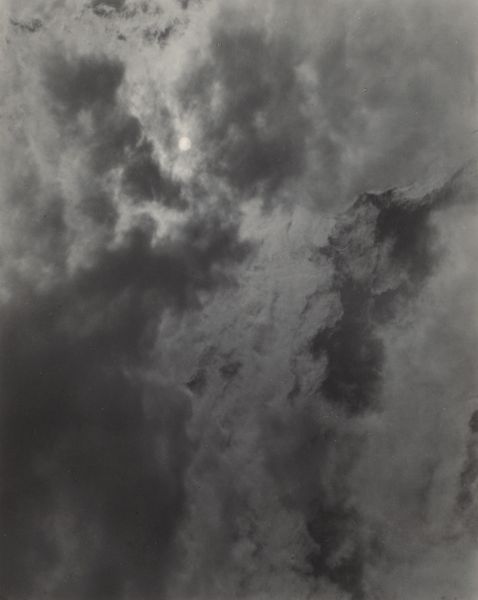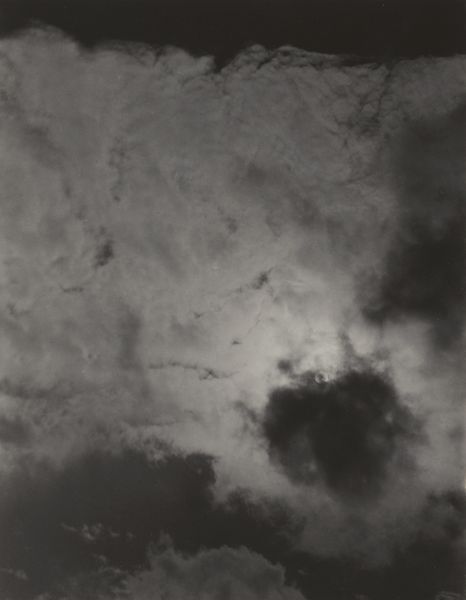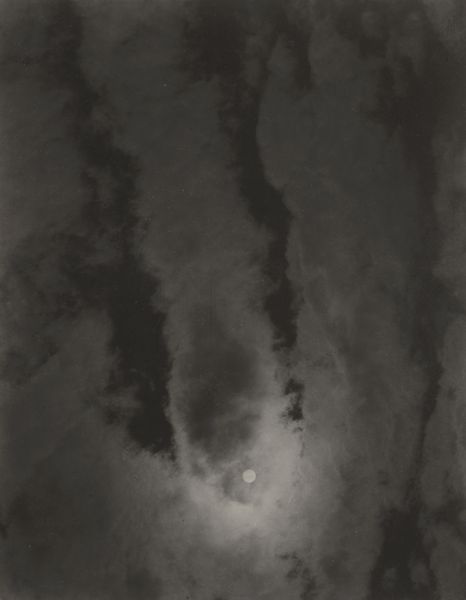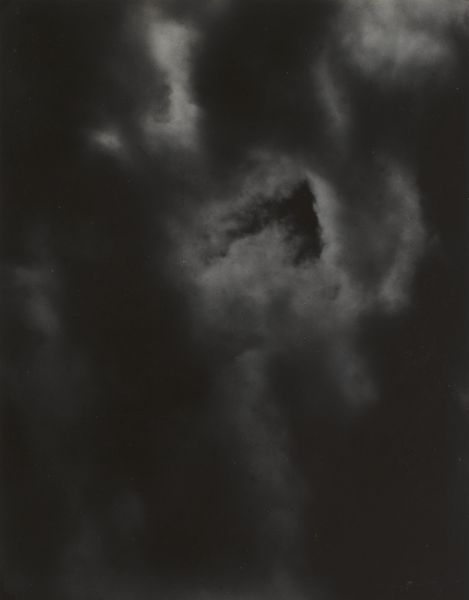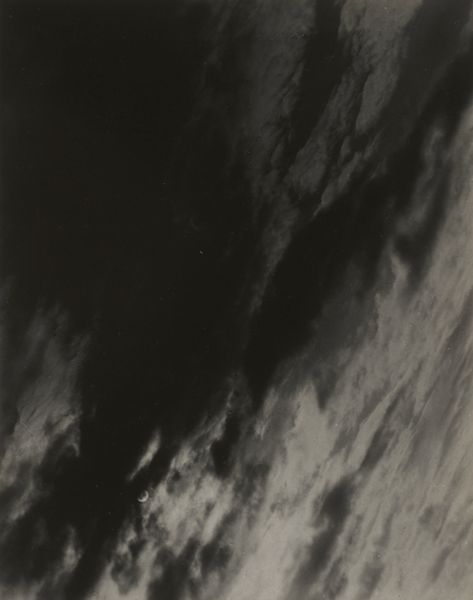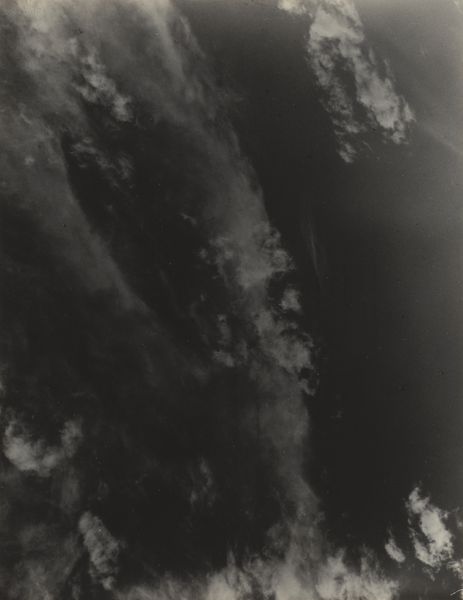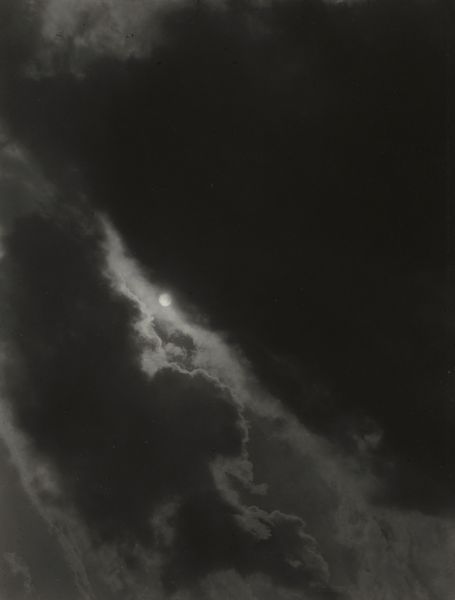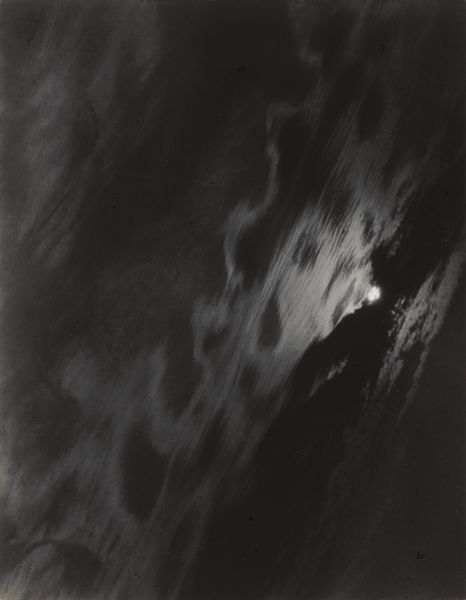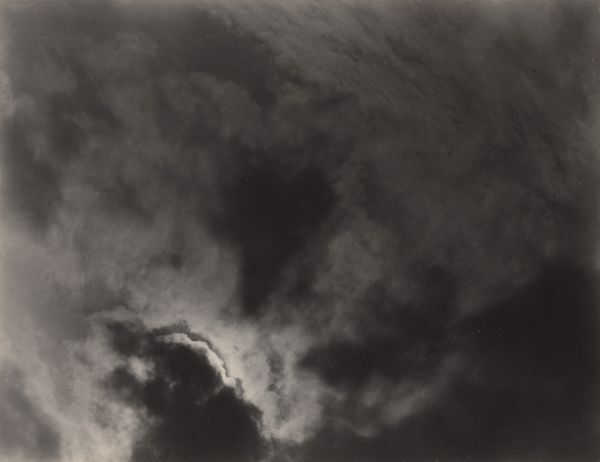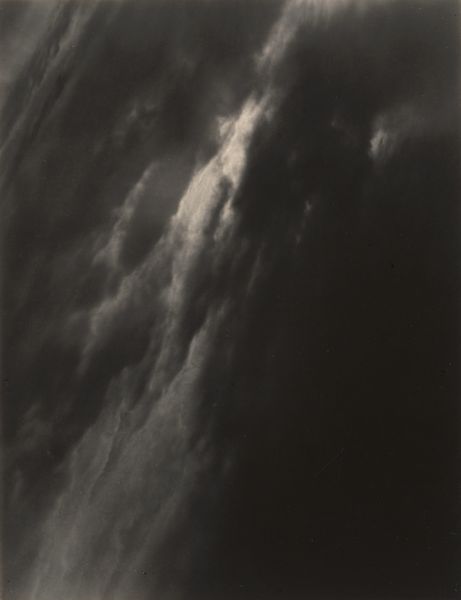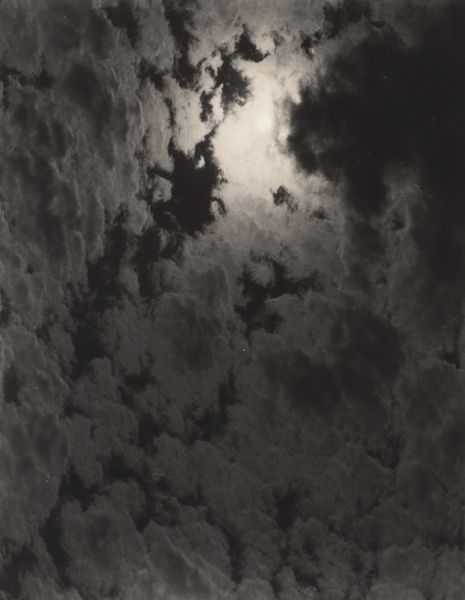
Dimensions: image: 11.2 x 9.2 cm (4 7/16 x 3 5/8 in.) sheet: 20.7 x 10.1 cm (8 1/8 x 4 in.) mount: 34.3 x 27.5 cm (13 1/2 x 10 13/16 in.)
Copyright: National Gallery of Art: CC0 1.0
Curator: This photograph, “Songs of the Sky B4,” was captured by Alfred Stieglitz in 1923, part of his "Songs of the Sky" series, explorations of the sublime captured in cloud formations. It's a monochrome gelatin silver print. Editor: Its somber, almost oppressive mood is immediate. The clouds swirl like phantoms. There’s a pronounced dynamism but channeled by what looks like murk and fog, all tightly compacted into a small frame. Curator: Stieglitz used the sky, and particularly clouds, as a vocabulary for human emotions and experiences. The clouds acted as equivalents to inner states of being. These weren't literal depictions of the sky as much as symbols representing abstract ideas. Editor: I find that use of symbol intriguing, the soft gradation of light and dark hinting at more profound dualities. The high contrast brings forth an internal harmony between compositional structure and emotion. The tonal shifts carry tremendous weight. The overall structure reveals a distinct artistic direction, particularly given the artist's involvement with the Photo-Secession movement. Curator: That is well articulated. The clouds he presented offered a sense of boundlessness, echoing a search for spiritual expression in a modern world rapidly being transformed by industry. There is an almost meditative quality; the shapes recur as themes or leitmotifs throughout the entire series. Editor: True, you perceive similar compositions across multiple photos within his extended "Songs of the Sky," yet, for me, the symbolic reading always arrives secondary to its material properties. Consider, too, Stieglitz’s meticulous control of the photographic process. What appears spontaneous likely emerges through immense precision. Curator: Indeed. It is a fusion between subjective experience and masterful photographic craft. These cloudscapes transcend their subject matter, revealing more about human emotion. It really showcases how we, as humans, see and find ourselves within our environment, no matter the modernity of our context. Editor: I agree. And this tight framing compels viewers toward internal reflection upon the composition’s nuances rather than expansive atmospheric reverie. Thanks to your insight into his symbolic vocabulary, I may just look at these skies a little differently.
Comments
No comments
Be the first to comment and join the conversation on the ultimate creative platform.

